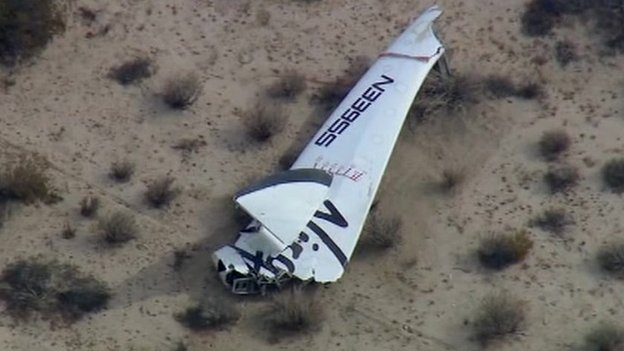It’s only been a couple of hours since Virgin Galactic lost its SpaceShipTwo spacecraft. The names of the pilots — one dead, one clinging to life — have yet to be released. I got the initial word via Twitter, a retweet of @spacecom via Alan Stern and some others. CNN, the BBC and others soon leapt aboard and will ride the story for days. In the wake of Orbital Sciences Corp.’s International Space Station-resupplying Antares disaster just two days ago, the big follow-up question for the nation’s media will be: Will commercial space (in this case NewSpace) ever recover?
Yes.
Consider: Fifty years ago this April, a nascent Ball Aerospace saw its second satellite blow up, taking three lives with it. From the book:
The OSO B’s travels ended in a 3,000-square-foot testing facility at the Kennedy Space Center. On April 14, 1964, Ball technician Lot Gabel stepped up to adjust a plastic bag shrouding the spacecraft and the third-stage rocket—a five-foot column of bottled fury— to which it was mounted. This innocuous act, like straightening a spouse’s collar, triggered a spark of static electricity.
A design flaw caused the rocket engine to ignite. It smashed the spacecraft against the hangar’s roof and then careened about the building, spraying blazing rocket fuel and finally ramming into a corner to burn itself out. Gabel, his Ball colleague Sid Dagle, and John Fassett of NASA died of severe burns. The 1967 Apollo 1 disaster, much more notorious, was no more lethal.
They didn’t give up.
Ball would have another shot at space, replacing destroyed instruments, repairing damaged hardware, and modifying the ill-fated spacecraft’s prototype for flight. In Boulder, they worked through their mourning. The OSO 2 launched less than a year after the accident, on February 3, 1965.
Ball Aerospace is still at it.
Virgin Galactic has already shown their mettle. Three workers from Scaled Composites, which built SpaceShipOne and SpaceShipTwo, were killed in a ground-based propellant-flow test in 2007. They’ve come a long way since. They must again work through the mourning. Then they must convince the market that the roughly 1-in-50 risk of rocket shots failing, the historic norm, somehow doesn’t apply to suborbital missions (SpaceShipTwo topped out at 62 miles) or is worth the thrill. I think passengers will just have to accept a two-percent chance of death, and that most will.
Alan Stern, whose tweet clued me into all this, has felt the loss of space disasters more closely than most: his PhD experiment was aboard the Space Shuttle Challenger on that chilly Florida day in April 1986. He’s bounced back, too, and is on his way to Pluto, at least vicariously, as principal investigator of NASA’s New Horizons mission.

